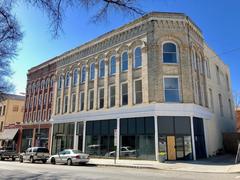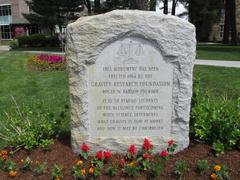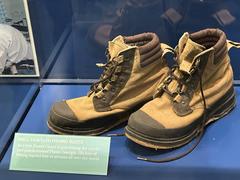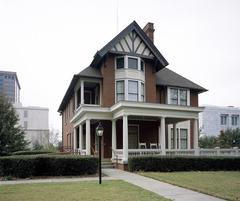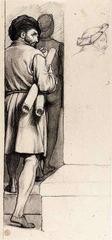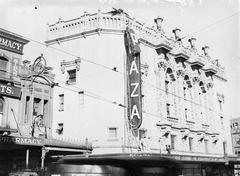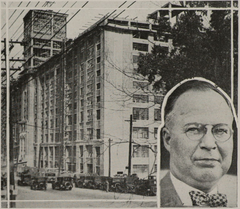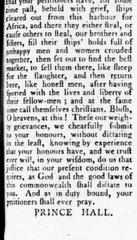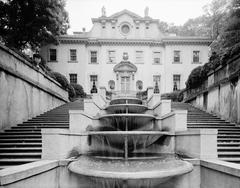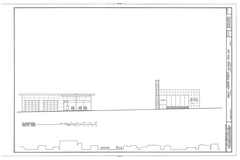
Atlanta Cyclorama and Civil War Museum: Visiting Hours, Tickets, and Complete Guide
Date: 03/07/2025
Introduction
The Atlanta Cyclorama & Civil War Museum stands as a monumental tribute to art, history, and public memory. Its centerpiece is an enormous 360-degree panoramic painting of the pivotal 1864 Battle of Atlanta, offering visitors an immersive journey into one of the defining moments of the American Civil War. Since its relocation and multi-million-dollar restoration at the Atlanta History Center in Buckhead, the Cyclorama has been revitalized as both a cultural landmark and an educational hub. This comprehensive guide covers everything you need to plan a memorable visit, including history, museum hours, ticketing, accessibility, travel tips, and more. For further details and historical context, refer to the Atlanta History Center (atlantahistorycenter.com) and the Georgia Encyclopedia (georgiaencyclopedia.org).
Table of Contents
- Origins and Creation of the Cyclorama
- Early Exhibition and Evolution in Atlanta
- Architectural and Interpretive Enhancements
- Preservation, Restoration, and Relocation
- Visiting Information: Hours, Tickets, Accessibility, and Amenities
- Visitor Experience: What to Expect
- Frequently Asked Questions (FAQ)
- Conclusion and Planning Tools
- Sources and Further Reading
Origins and Creation of the Cyclorama
The Atlanta Cyclorama is a monumental 360-degree panoramic oil painting depicting the Battle of Atlanta. Conceived during the late 19th-century craze for cycloramas—enormous circular paintings that offered immersive experiences—it was commissioned by Union General John A. Logan and executed by German artists from the American Panorama Company in Milwaukee, Wisconsin, between 1885 and 1886 (historyatlanta.com). Measuring 49 feet in height and over 370 feet in circumference, it is among the world’s largest oil paintings (atlantahistorycenter.com). The painting’s original purpose was to celebrate the Union victory, touring northern cities as a dramatic spectacle.
Early Exhibition and Evolution in Atlanta
After debuting in Minneapolis in 1886, the Cyclorama traveled through several cities before settling in Atlanta in 1892. Here, its narrative shifted: local promoter Paul Atkinson and others adapted the painting for Southern audiences, modifying certain details to suggest a Confederate victory (georgiaencyclopedia.org; The Atlantic). By 1898, the City of Atlanta assumed ownership, installing the painting in a purpose-built structure in Grant Park. The Cyclorama quickly became a regional attraction, entwined with the city’s Civil War memory.
Architectural and Interpretive Enhancements
In 1921, a new Grant Park building was constructed to accommodate rising interest. By 1927, the historic locomotive “Texas”—famous for its role in the Andrews Raid—joined the exhibit, broadening its Civil War focus (georgiaencyclopedia.org). During the 1930s, the Works Progress Administration funded the addition of a three-dimensional diorama, blending painted scenes with sculpted battlefield figures for a heightened sense of realism (atlantahistorycenter.com). A notable detail: during a 1939 visit for the “Gone With the Wind” premiere, Clark Gable inspired the creation of a diorama figure modeled after his character, Rhett Butler (georgiaencyclopedia.org).
The Cyclorama’s narrative has mirrored evolving attitudes toward Civil War memory. Once heralded as a Union triumph, the painting was periodically reinterpreted for Southern audiences and, at times, associated with the “Lost Cause” mythology (The Atlantic). The current exhibition at the Atlanta History Center confronts these shifting legacies, offering historical context, inclusive storytelling, and critical reflection.
Preservation, Restoration, and Relocation
By the 2000s, the Cyclorama faced pressing preservation challenges: canvas deterioration, pigment fading, and structural issues in its aging Grant Park home. In 2014, the City of Atlanta and Atlanta History Center initiated a $35 million relocation and restoration project (historyatlanta.com). The Cyclorama was carefully moved to a new 23,000-square-foot facility at the Atlanta History Center in Buckhead. Restoration experts returned the painting to its original hourglass shape and full height, recreating elements lost over time and integrating advanced environmental controls (atlantahistorycenter.com). The revitalized exhibition opened to the public in 2019, featuring a multimedia presentation that traces the painting’s artistic, historical, and social journey.
Visiting Information: Hours, Tickets, Accessibility, and Amenities
Location
- Address: Atlanta History Center, 130 West Paces Ferry Road NW, Atlanta, GA 30305 (directions and parking)
- Neighborhood: Buckhead
- Public Transit: Accessible via MARTA bus routes; short rideshare/taxi from nearest stations.
Hours
- Tuesday–Sunday: 10:00 AM – 5:00 PM
- Monday: Closed
- Note: Hours may vary during holidays and special events. Confirm before your visit (official hours).
Tickets
- Admission: Included with general Atlanta History Center entry
- Adults: $22.00
- Seniors (65+): $18.00
- Students (13+): $18.00
- Children (4–12): $9.00
- Children under 4: Free
- Discounts available for veterans and select groups (ticketing page)
- Purchase: Online advance purchase recommended, especially during peak times.
Accessibility and Amenities
- Wheelchair accessible: Ramps, elevators, accessible restrooms
- Assistive devices: Audio guides and listening devices available
- Family-friendly: Stroller access, baby-changing stations
- Dining: Onsite café (Souper Jenny) with vegetarian and kid-friendly options
- Gift Shop: Civil War memorabilia, books, local souvenirs
- Wi-Fi: Free throughout campus
- Gardens & Outdoor Spaces: Six historic gardens for relaxation
Visitor Experience: What to Expect
- Cyclorama Exhibition: Enter through a dramatic tunnel beneath the diorama into a rotunda designed for immersive viewing. Ascend to a 15-foot-tall platform for a panoramic perspective.
- Theatrical Presentation: Enjoy a 12-minute multimedia show (hourly from 10:00 AM – 3:00 PM) combining narration, light, and sound to bring the Battle of Atlanta to life.
- Exhibits & Artifacts: Explore two levels of Civil War artifacts, rare uniforms, weapons, images, and digital interactives. Highlights include the historic steam locomotive “Texas.”
- Interpretive Focus: The exhibition addresses the painting’s controversial history and shifting interpretations, encouraging critical reflection on the evolution of Civil War memory.
- Photography: Non-flash photography allowed in most areas; flash and tripods generally restricted inside the rotunda.
- Recommended Visit Duration: 60–90 minutes for the Cyclorama; plan 3+ hours if exploring the entire Atlanta History Center campus.
Frequently Asked Questions (FAQ)
Q: Can I buy Atlanta Cyclorama tickets online?
A: Yes, advance online purchase is recommended via the Atlanta History Center.
Q: What are the Cyclorama visiting hours?
A: Tuesday–Sunday, 10:00 AM – 5:00 PM. Closed Mondays.
Q: Is the Cyclorama accessible for wheelchair users?
A: Yes, with accessible entrances, elevators, and restrooms.
Q: Are guided tours available?
A: Yes, docent-led tours and educational programs are regularly scheduled. Check the events calendar.
Q: Can I take photos?
A: Non-flash photography is permitted in most areas, but flash and tripods are restricted in the rotunda.
Q: How long should I plan for my visit?
A: Allocate 60–90 minutes for the Cyclorama exhibit; a half-day is ideal for exploring the full Atlanta History Center.
Conclusion and Planning Tools
The Atlanta Cyclorama & Civil War Museum is more than a monumental painting—it is a living historical narrative, reflecting the evolving ways America interprets its past. The state-of-the-art restoration and engaging interpretive media make the Cyclorama a must-see for history enthusiasts, art lovers, and families alike. Plan your visit by checking official hours, securing tickets in advance, and exploring amenities on the Atlanta History Center’s website. For audio guides, related articles, and live updates, download the Audiala app and follow us on social media.
Sources and Further Reading
- Atlanta Cyclorama and Civil War Museum, 2024, Atlanta History Center (atlantahistorycenter.com)
- Cyclorama, Atlanta, 2024, Georgia Encyclopedia (georgiaencyclopedia.org)
- How the Atlanta Cyclorama Lost Its Confederate Overtone, 2019, The Atlantic (The Atlantic)
- Atlanta Cyclorama History and Restoration, 2024, History Atlanta (historyatlanta.com)
- Visiting the Atlanta Cyclorama, 2024, Downtown Atlanta (downtownatlanta.com)
- Atlanta History Center Visitor Information
- Atlanta History Center Ticketing
- Atlanta History Center Programs and Events
- Atlanta History Center Cyclorama Blog
- HowStuffWorks: Atlanta Cyclorama




